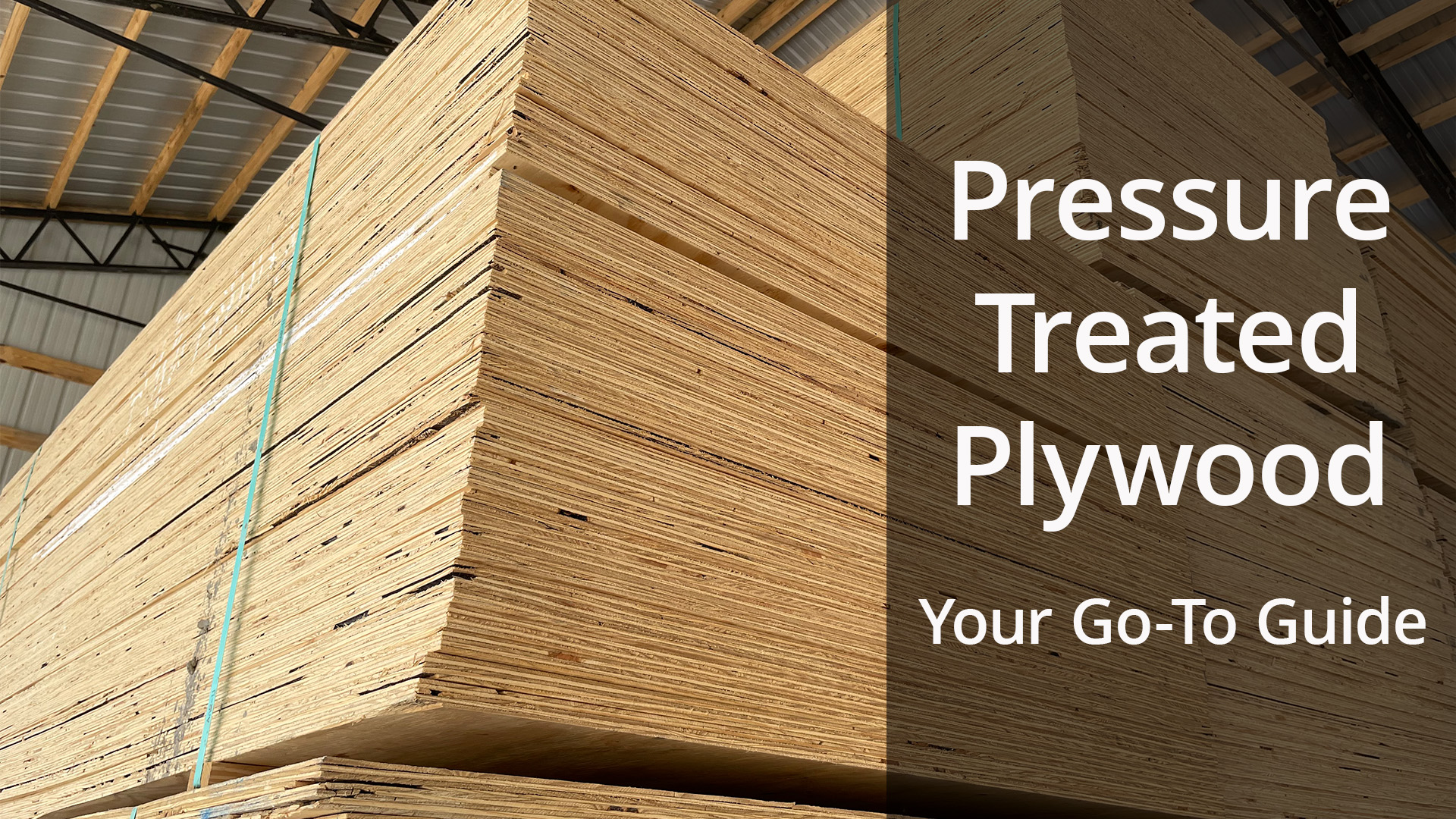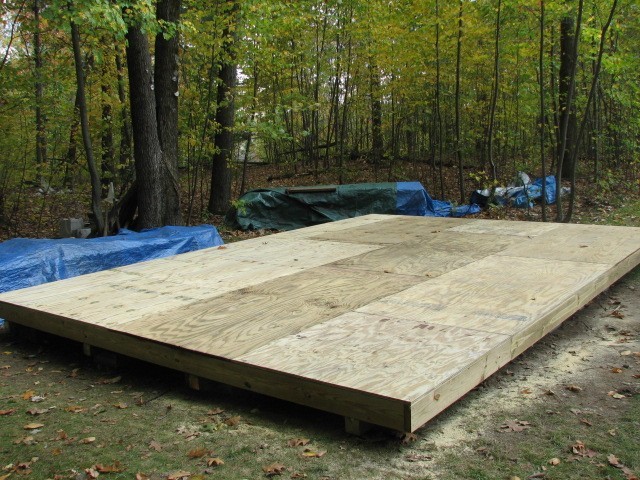When it comes to woodworking projects, plywood is a versatile and commonly used material. But have you ever wondered if plywood needs to be treated before using it? Well, you’re in the right place to find out! In this article, we’ll explore the question: “Does plywood need to be treated?”
Whether you’re a beginner woodworker or a seasoned DIY enthusiast, understanding whether plywood requires treatment is essential. The answer depends on various factors, including where you plan to use the plywood and the level of exposure it will have to the elements.
In this informative piece, we’ll discuss the importance of treating plywood, the different treatment options available, and when it’s necessary to apply them. So, let’s dive in and uncover the world of plywood treatment together!

Does Plywood Need to Be Treated?
Plywood is a versatile and commonly used building material that is made by gluing together several thin layers of wood veneer. It is a popular choice for a wide range of applications, from construction to furniture making. However, one question that often comes up is whether plywood needs to be treated before use. In this article, we will explore the reasons for treating plywood, the different treatment options available, and the benefits of treating plywood.
Reasons for Treating Plywood
Treating plywood is important for several reasons. Firstly, plywood is susceptible to moisture damage, which can cause warping, rotting, and delamination. Treating plywood with a moisture-resistant coating or sealer can help to protect it from the effects of water and humidity. Secondly, untreated plywood is vulnerable to insect and pest infestation. Termites, wood borers, and other pests can quickly destroy untreated plywood, making treatment essential for long-term durability. Lastly, treating plywood can enhance its appearance and prolong its lifespan. Stains, paints, and finishes not only provide an aesthetically pleasing surface but also add a layer of protection against wear and tear.
When it comes to treating plywood, there are several options available. The most common treatments include applying a water-resistant sealant, using pressure-treated plywood, or using wood preservatives. A water-resistant sealant, such as a polyurethane or epoxy coating, creates a barrier that prevents water from penetrating the plywood. Pressure-treated plywood is infused with chemicals that make it resistant to moisture, decay, and insect damage. Wood preservatives, such as borate or copper-based treatments, are applied to the surface of the plywood to deter pests and fungal growth.
The Benefits of Treating Plywood
Treating plywood offers several benefits. Firstly, it helps to prolong the lifespan of the plywood by protecting it from moisture damage, insect infestation, and decay. This is particularly important for plywood used in outdoor or high-moisture environments, such as decking, siding, or roofing. Secondly, treating plywood improves its durability and resistance to wear and tear. A protective coating or preservative treatment can prevent scratches, stains, and general deterioration, ensuring that the plywood remains in good condition for longer periods. Additionally, treating plywood enhances its appearance. By applying stains, paints, or finishes, you can customize the plywood to match your desired aesthetic, whether it’s a natural wood look or a bold, colorful finish.
Treating plywood also offers practical advantages. For example, treated plywood is often required or recommended by building codes for certain applications, such as structural framing or subflooring. Using treated plywood ensures that you comply with regulations and guarantees the longevity of your construction project. Furthermore, treated plywood can be easier to clean and maintain. The sealed or treated surface is less porous, making it less likely to absorb dirt, stains, or liquids. This makes maintaining and cleaning the plywood simpler and more efficient.
Types of Plywood Treatments
There are various treatment options available for plywood, depending on the specific needs of your project. Here are three common types of plywood treatments:
1. Water-Resistant Sealants: Applying a water-resistant sealant, such as polyurethane or epoxy, is a popular way to protect plywood from moisture damage. These sealants form a protective layer on the surface of the plywood, preventing water from seeping in. They are particularly useful for plywood used in applications exposed to moisture, such as outdoor furniture or bathroom cabinets.
2. Pressure-Treated Plywood: Pressure-treated plywood is infused with chemicals, usually copper-based preservatives, to enhance its resistance to moisture, decay, and insect infestation. The treatment process involves placing the plywood in a pressure chamber and forcing the preservatives into the wood fibers under high pressure. This type of plywood is commonly used for outdoor projects like decks, fences, and sheds.
3. Wood Preservatives: Wood preservatives, such as borate or copper-based treatments, are applied to the surface of the plywood to protect it from pests and fungal growth. These treatments can be brushed or sprayed onto the plywood and penetrate the wood to create a barrier against pests. Wood preservatives are ideal for plywood used in areas prone to termite infestations or mold and mildew growth.
Should You Treat Plywood?
Treating plywood is highly recommended, especially for projects that involve exposure to moisture, insects, or harsh environmental conditions. Whether it’s for outdoor construction, furniture making, or any other application where plywood is exposed to potential damage, treating the plywood can significantly enhance its durability and lifespan. Not only does it protect the plywood from water damage and pests, but it also improves its overall appearance and performance. By investing in the appropriate treatment method for your specific project, you can ensure that your plywood stays in excellent condition for years to come. So, remember to consider the treatment options available and choose the one that best suits your needs.
Key Takeaways: Does Plywood Need to Be Treated?
- Plywood generally does not need to be treated if it is used indoors and protected from moisture.
- If plywood will be exposed to moisture, such as in outdoor projects or areas prone to humidity, it should be treated with a water-resistant finish.
- Applying a sealant or primer to plywood before painting or staining can improve its durability and longevity.
- Treated plywood, also known as pressure-treated plywood, is chemically treated to resist decay and insect infestation, making it suitable for outdoor use.
- Regular maintenance, such as reapplying sealant or finish, is important to extend the lifespan of treated plywood and maintain its protection against moisture.
Frequently Asked Questions
Does plywood need to be treated?
1. How can untreated plywood be protected from moisture damage?
Although untreated plywood is susceptible to moisture damage, there are ways to protect it. One option is to apply a water-resistant finish, such as paint or polyurethane, to the surface and edges of the plywood. This will create a barrier that helps repel water and prevent rotting. Another method is to seal the plywood with an exterior-grade sealant, which provides an additional layer of protection against moisture.
Additionally, keeping untreated plywood in a dry, well-ventilated area can help minimize the risk of moisture damage. Storing it off the ground and covering it properly with a tarp or waterproof covering when not in use can also help protect it from excessive moisture exposure.
2. Is it necessary to treat plywood if it will be used indoors?
If the plywood will be used indoors and is not expected to be exposed to moisture or humidity, treating it may not be necessary. Untreated plywood can still be useful for interior applications such as furniture, cabinets, or shelving, as long as it is kept in a controlled environment with low moisture levels. It’s important to note that treating plywood can enhance its durability and longevity even in indoor settings.
However, if there is a potential for the plywood to come into contact with moisture, such as in bathrooms or kitchens, it is recommended to treat it with a water-resistant finish or sealant to prevent any damage from occurring.
3. What are the benefits of treating plywood?
Treating plywood offers several benefits. One of the main advantages is protection against moisture damage. Treating plywood with a water-resistant finish or sealant helps to prevent swelling, warping, and rotting caused by exposure to moisture. This extends the lifespan of the plywood and ensures its structural integrity.
Additionally, treating plywood can enhance its appearance. Finishing the plywood with paints, stains, or varnishes can give it a polished and aesthetically pleasing look. The treatment can also provide a smoother and more durable surface, making the plywood easier to clean and maintain over time.
4. How often should I treat plywood?
The frequency of treating plywood depends on various factors, including its exposure to moisture and wear and tear. If the plywood is constantly exposed to outdoor elements or high humidity, it is recommended to reapply the treatment every year or two. This helps maintain its resistance to moisture and ensures its longevity.
For plywood used indoors or in low-moisture environments, the need for re-treatment may be less frequent. However, it is still a good practice to inspect the plywood periodically and apply a fresh coat of treatment as needed. Keeping an eye out for signs of damage, such as discoloration or soft spots, can help determine when re-treatment is necessary.
5. Can pressure-treated plywood be used instead of treating regular plywood?
Pressure-treated plywood is an excellent alternative to treating regular plywood. Pressure-treated plywood has been treated with chemical preservatives, which penetrate deep into the wood fibers, offering enhanced protection against rot, decay, and insect infestation. This treatment is particularly beneficial for plywood used in outdoor applications or in areas with high humidity.
Regular plywood, on the other hand, can still be treated with various finishes and sealants to provide some level of protection. However, pressure-treated plywood provides a higher level of resistance and durability, making it a preferred choice in many cases where prolonged exposure to moisture is expected.

5 Mistakes Buying Plywood – Don’t Waste Your Money!
Summary
So, to wrap things up, plywood does not necessarily need to be treated. It depends on where and how it will be used. If it will be exposed to moisture or outdoors, treating it can help prevent damage. But if it will be used indoors or in dry conditions, treating may not be necessary. It’s important to consider the specific project and its requirements for making the right decision.
